As the holiday season approaches, Italy awakens with a symphony of festive flavours and time-honoured traditions. Among the many enchanting customs, the spotlight gleams brightly on two iconic Christmas treats: panettone and pandoro. These desserts not only grace Italian tables with their presence but also carry a rich cultural legacy that transcends generations.
In this article, we delve into the origins, unique characteristics, and differences between panettone and pandoro, uncovering the sweet secrets that make them cherished symbols of Italian holiday celebrations.
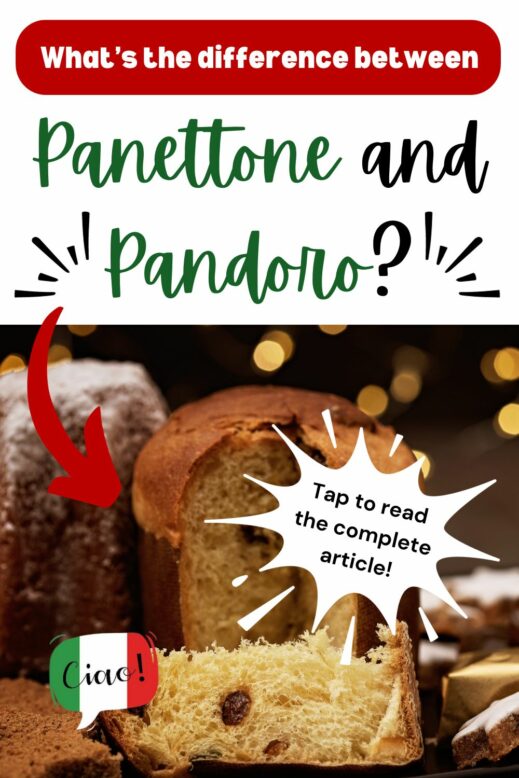
Pandoro vs Panettone – What’s the difference?
Panettone is a rich Italian bread made with wheat, eggs, sugar, and butter, interspersed with sultana raisins and candied fruit. The dough, leavened with yeast or lievito madre (starter culture or more literally “mother starter”), undergoes a two-day rising process before being expertly baked to perfection. Once out of the oven, it is flipped upside-down so that the top won’t collapse and left to rest for an entire day.
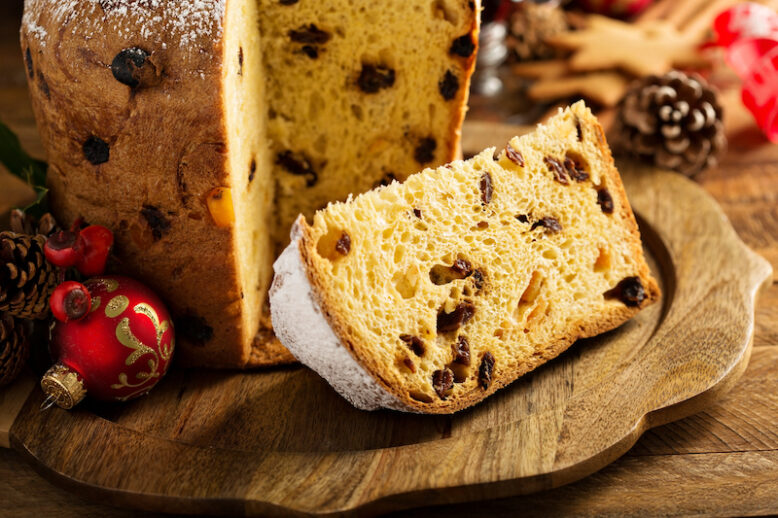
Is your mouth watering yet? Good! Then let’s take a look at how pandoro compares!
Pandoro is a classic Italian sweet bread, particularly beloved during the Christmas season. Its traditional shape resembles a frustum with an eight-pointed star section. Often adorned with a dusting of vanilla-scented icing sugar, pandoro is reminiscent of the snow-covered peaks of the Italian Alps. When sliced, it takes on the appearance of a Christmas tree, adding a festive touch to holiday celebrations!
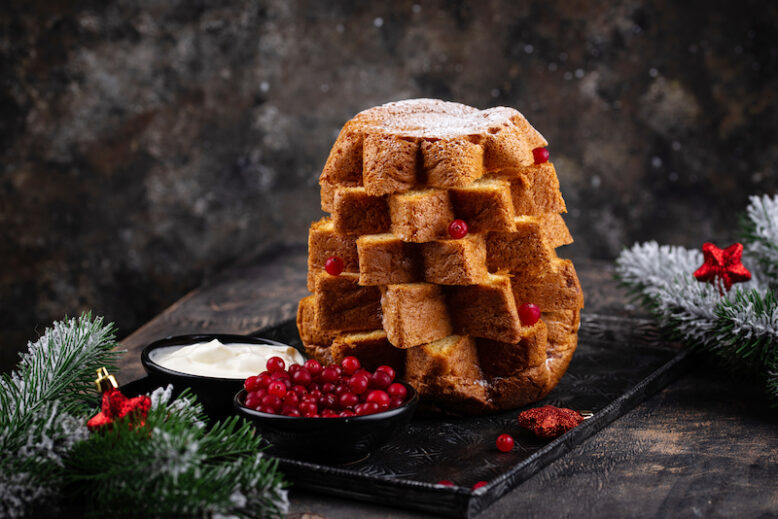
This dessert requires the use of natural yeast and ingredients such as wheat flour, sugar, fresh chicken eggs, vanilla essence, large quantities of butter, egg yolks, and salt. A well-crafted pandoro undergoes three stages of proofing and 38 hours of work.
In comparison to panettone, pandoro boasts a higher butter content, ensuring a richer and more uniform consistency. Its distinctive star-shaped design sets it apart, and it notably lacks the candied fruit found in panettone.
While both delicacies are typically purchased rather than homemade due to their intricate preparation, they share the tradition of being presented in festive packaging and exchanged as thoughtful gifts during the holiday season.
Many panettone and pandoro variations grace the supermarket shelves today, showcasing enticing fillings like cream, chocolate, lemon curd, liqueur, and chestnuts, among others. However, ask any Italian, and they will tell you that the enduring favourite continues to be the traditional recipes, bought from a local bakery.

Where Did Panettone Originate?
The roots of panettone can be traced back to the 15th century when it first appeared in the form of wheat loaves. During this period, wheat was a scarce commodity, so it was considered a special treat enjoyed on occasions, especially by the less privileged, making it a festive indulgence during Christmas. (Source: Consorzio Panettone)
We first encounter panettone in its modern form in the 19th century, as documented in an 1839 Italian-Milanese dictionary that detailed the inclusion of butter, eggs, sugar, and raisins in its recipe.
Up until the late 1800s, panettone remained a regional specialty primarily enjoyed in Milan. It was the visionary Angelo Motta, founder of a Milan bakery in 1919, who transformed the landscape of panettone.
Fuelled by inspiration from a Russian émigré’s request for 200 kulich – traditional Russian Easter cakes – Motta discerned remarkable parallels between the two recipes. Embracing innovation, he introduced a tall, cylindrical piece of paper into the production of panettone, mirroring the cylindrical tin employed for kulich. This ingenious adaptation gave panettone its unique vertical, puffed-top shape, a hallmark that has since become synonymous with the delightful Christmas treat. (Source: BBC)
Motta and competitor Gioacchino Alemagna later managed to industrialise the panettone-making process, allowing the dessert to transcend Milan and become a cherished Christmas tradition shipped across Italy, and much of the world.
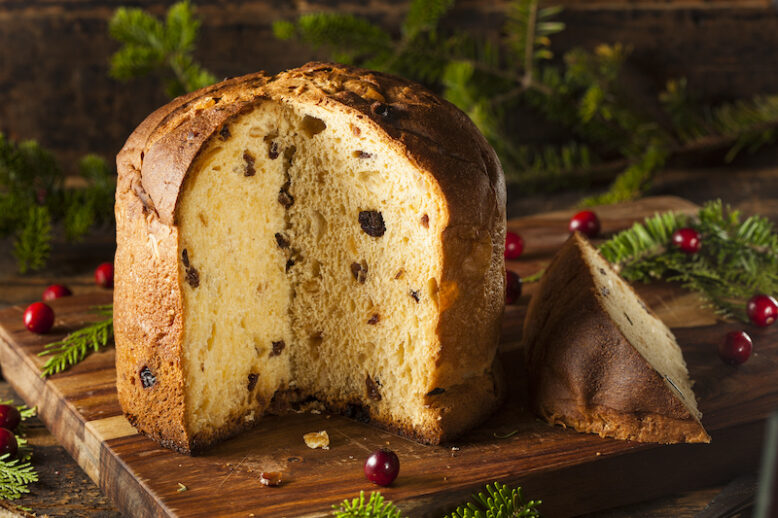
Where Did Pandoro Originate?
While the exact origins of pandoro remain unclear, its precursor was almost certainly a star-shaped sponge cake from Verona called nadalin. The evolution of the modern pandoro, on the other hand, is well-documented.
In the late 1800s, Domenico Melegatti, a local pastry chef, was granted a three-year exclusivity by the Kingdom of Italy to produce a special cake named pandoro. In 1884, he trademarked the iconic eight-star pointed cake, earning the nickname ‘bread of gold,’ which quickly gained popularity among wealthy Venetians.
The Melegatti brand has consistently produced this Christmas classic without interruption in Verona since 1894. Even the historic lievito madre, connecting all pandoro made over a century, has been carefully preserved. (Source: Delicious Italy)
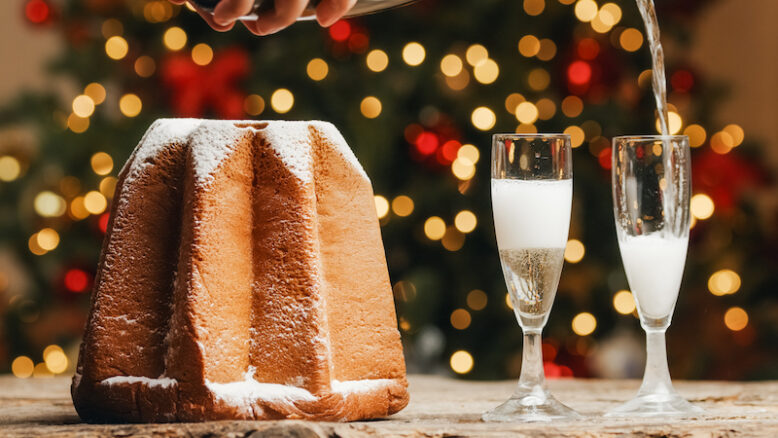
The Etymology and Pronunciation of Panettone and Pandoro
The word panettone derives from panetto ‘small loaf of bread‘, the diminutive form of pane ‘bread‘. The augmentative suffix -one changes the meaning to ‘large bread‘.
pa·net·tó·ne
Pandoro is the combination of pan(e) (bread) and oro (gold), so it literally means “golden bread“.
pan·dò·ro
Fun Panettone and Pandoro Facts
Italy produces a whopping 7,100 tonnes of panettone per year! (Source: Smithsonian)
In Milan, many locals reserve a slice of Christmas panettone for February 3rd. Believers hold that consuming this reserved slice on the Feast of San Biagio, the saint renowned for rescuing a child from a choking incident with a piece of bread, and the so-called guardian against sore throats, acts as a talisman warding off illness!
These days, you can buy mini panettoni or pandoro from the supermarket. They make the perfect stocking stuffer!
Panettone = Pan de Toni?
Before we end this article, here’s a whimsical, though entirely fictional, tale about the origin of panettone.
Legend has it that on Christmas Eve in 1495, at the Sforza Castle in Milan, the Counts were hosting an extravagant dinner. The household cooks were so overwhelmed that they had to recruit non-kitchen staff to help with the numerous dishes.
A hall boy named Toni was assigned to oversee the baking of brioches, but he accidentally fell asleep, leading to a batch of ruined brioches. In a moment of panic, Toni got creative with the leftover dough, adding eggs, raisins, and candied fruit. He then presented the concoction to the Countess, who supposedly declared it delicious.
This fanciful tale is woven into the name of panettone, said to be derived from “Pan de Toni,” Toni’s bread! (Source: Mamma Loves Italy)
So which is better?
Determining whether panettone or pandoro is better is ultimately subjective, as both are delicious in their own right. Christmas in Italy embraces the presence of both these traditional treats, and the choice between them ultimately depends on individual taste preferences.
How about you – which do you prefer?
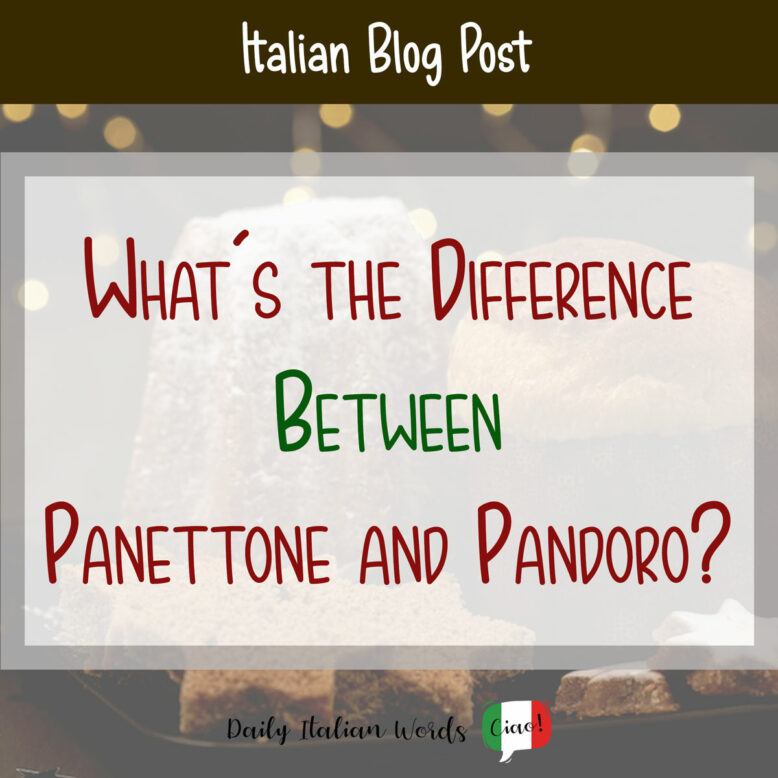
Heather Broster is a graduate with honours in linguistics from the University of Western Ontario. She is an aspiring polyglot, proficient in English and Italian, as well as Japanese, Welsh, and French to varying degrees of fluency. Originally from Toronto, Heather has resided in various countries, notably Italy for a period of six years. Her primary focus lies in the fields of language acquisition, education, and bilingual instruction.


